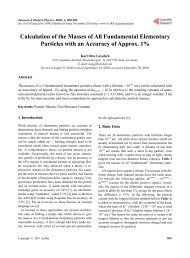Locali crysta ization an als using nd orienta molecula ation of h ar ...
Locali crysta ization an als using nd orienta molecula ation of h ar ...
Locali crysta ization an als using nd orienta molecula ation of h ar ...
You also want an ePaper? Increase the reach of your titles
YUMPU automatically turns print PDFs into web optimized ePapers that Google loves.
1<br />
2<br />
3<br />
4<br />
5<br />
6<br />
7<br />
8<br />
9<br />
10<br />
11<br />
12<br />
13<br />
14<br />
15<br />
16<br />
17<br />
18<br />
19<br />
20<br />
21<br />
22<br />
23<br />
24<br />
25<br />
26<br />
27<br />
28<br />
29<br />
30<br />
31<br />
32<br />
33<br />
34<br />
Acta Crystallographica Section D rese<strong>ar</strong>ch papers<br />
StyA1 were collected at BESSY BL14.1 at the Ta peak wavelength, prior determined <strong>using</strong> <strong>an</strong> X-ray<br />
fluorescence emission spectrum. The data were integrated with XDS (v06/2010; (Kabsch, 2010)) <strong>an</strong>d<br />
scaled with XSCALE (v06/2010;(Kabsch, 2010)). The statistics <strong>of</strong> the processed datasets <strong>ar</strong>e shown<br />
in Table 1. The native <strong>an</strong>d derivative datasets <strong>of</strong> the DR6 <strong>crysta</strong>ls were scaled together in SCALEIT<br />
<strong>an</strong>d isomorphous differences for the MR-se<strong>ar</strong>ches were calculated with SFTOOLS.<br />
The diffraction data shown in table 1 <strong>ar</strong>e available upon request from the authors <strong>an</strong>d were deposited<br />
at http://www.fli-leibniz.de/www_pxg/supp-mat/.<br />
2.5. <strong>Locali</strong>z<strong>ation</strong> <strong>an</strong>d <strong>orienta</strong>tion <strong>of</strong> HA-clusters <strong>an</strong>d phase calcul<strong>ation</strong><br />
MR se<strong>ar</strong>ches for <strong>orienta</strong>tion <strong>an</strong>d local<strong>iz<strong>ation</strong></strong> <strong>of</strong> the HA-clusters in DR6 <strong>an</strong>d lysozyme <strong>crysta</strong>ls were<br />
performed in MOLREP (version 10.2.35; (Vagin & Teplyakov, 1997)) <strong>using</strong> the CCP4 version 6.1.13<br />
<strong>an</strong>d the CCP4i interface version 2.0.6. Isomorphous or <strong>an</strong>omalous differences were used instead <strong>of</strong><br />
structure factor amplitudes. If HA-clusters were located on a symmetry axis (DR6-HMT-derivative,<br />
Lysozyme-TaB-derivative) the packing function had to be disabled. In case <strong>of</strong> the fragment <strong>of</strong> the<br />
mouse ubiquitin-activating enzyme (MUAE) <strong>an</strong> overall B-factor <strong>of</strong> 85 Å 2 was applied for the MRse<strong>ar</strong>ch,<br />
guided by the reported Wilson B factor <strong>of</strong> the diffraction data (Szczep<strong>an</strong>owski et al., 2005)).<br />
Atomic coordinates <strong>of</strong> �-metatungstate (ABOCIE; (Niu et al., 2004)), phosphotungstate (BIGLIN;<br />
(Hu<strong>an</strong>g et al., 2004)) <strong>an</strong>d the dodecabromohexat<strong>an</strong>talum c<strong>ation</strong> (AFASUV; (Vojnovic et al., 2002))<br />
were obtained from the Cambridge Structural Database (CSD) (Allen, 2002) <strong>an</strong>d used as se<strong>ar</strong>ch<br />
models. To test the perform<strong>an</strong>ce <strong>of</strong> this approach, additional MR se<strong>ar</strong>ches were performed, <strong>using</strong><br />
isomorphous or <strong>an</strong>omalous differences to the resolution limits given in Table 2. These resolution<br />
limits were applied by the RESMAX keyword in MOLREP. For MR se<strong>ar</strong>ches at the Ta-peak<br />
wavelength only the Ta coordinates were used as se<strong>ar</strong>ch model whereas a combined model consisting<br />
<strong>of</strong> both, the Ta <strong>an</strong>d the Br coordinates was used as se<strong>ar</strong>ch model at the Br-peak wavelength.<br />
Subsequently to MR, experimental phases were calculated in SHARP version 2.6.0 (Bricogne et al.,<br />
2003). Phases were calculated <strong>using</strong> the native <strong>an</strong>d the MAD-peak datasets in case <strong>of</strong> DR6-HMT, the<br />
W-peak <strong>an</strong>d the Ta-peak datasets in case <strong>of</strong> lysozyme <strong>an</strong>d the Ta-peak dataset in case <strong>of</strong> StyA1<br />
(Table 1). For HMT <strong>an</strong>d TaB, the atom positions obtained from MR were used directly <strong>an</strong>d only<br />
B-factor <strong>an</strong>d occup<strong>an</strong>cy refinement was performed in SHARP. For TPT, the structure <strong>of</strong> the initial<br />
se<strong>ar</strong>ch model in MR differed from the final degrad<strong>ation</strong> product fou<strong>nd</strong> in the <strong>crysta</strong>ls <strong>an</strong>d positional<br />
refinement was used for all sites. Anomalous difference maps i<strong>nd</strong>icated the presence <strong>of</strong> additional<br />
single heavy atom sites. These sites were stepwise located by residual/LLG-maps <strong>an</strong>alysis, refined<br />
<strong>an</strong>d included in the phase calcul<strong>ation</strong> in SHARP. For comp<strong>ar</strong>ison, the phase calcul<strong>ation</strong> was <strong>als</strong>o<br />
performed based on spherical averaging <strong>of</strong> the HA-clusters in SHARP (Bricogne et al., 2003), <strong>using</strong><br />
the SPHCLUSTER keyword as recomme<strong>nd</strong>ed in the SHARP m<strong>an</strong>ual<br />
6




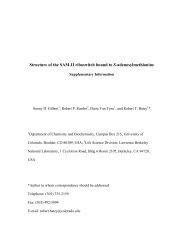

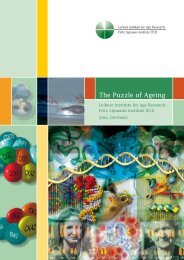

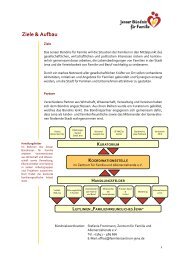



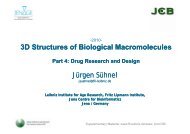
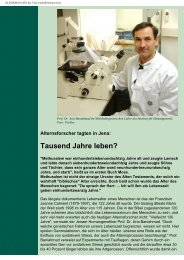

![Programm [pdf]](https://img.yumpu.com/20944039/1/184x260/programm-pdf.jpg?quality=85)
